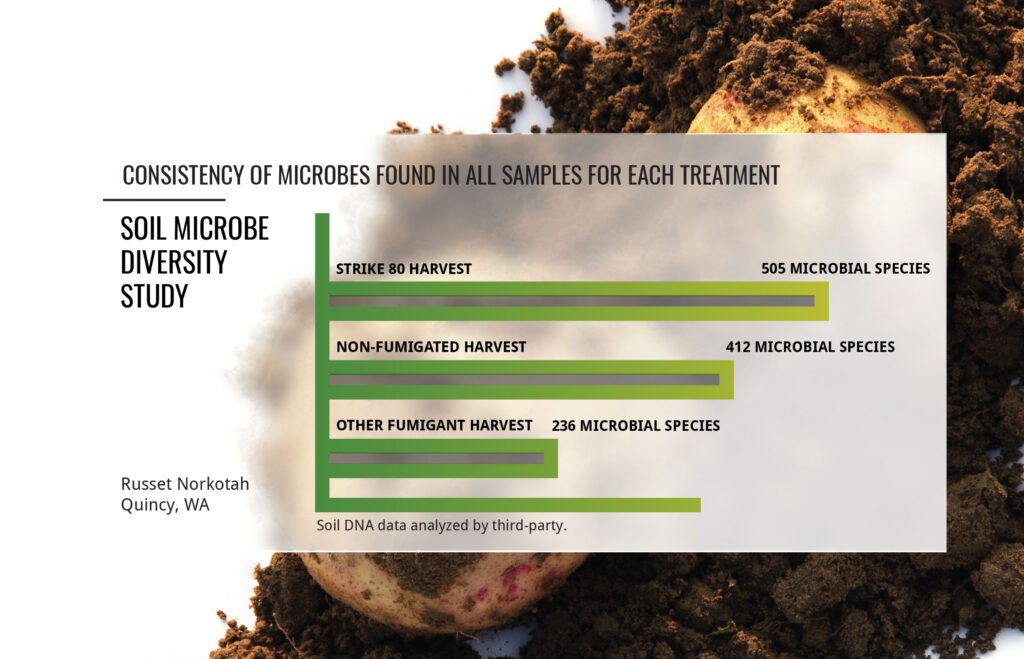
Pushing For Sustainability Is Good, But Only If We Know What We’re Aiming For
(Sponsored) You’d be hard pressed to look anywhere in agriculture today without running into the word ‘sustainability’. The whole industry is pressing forward on sustainability … but what does sustainability really mean? How do we define sustainability’s goals, how do we choose the tools to move sustainability forward, and how do we assess whether we’re achieving measurable sustainability improvement? Could new genomic tools that can identify soil microbe composition help us move toward ‘functional sustainability’?
I define real change – what I call ‘functional sustainability’ – as a measurably positive impact to soil health, resource use efficiency, emissions or other parameters that align with or improve the total crop production system. There’s no point in crowing about a stand-alone sustainability improvement that costs yield, or a reduced-impact pesticide that leaves a crop more vulnerable. The only kind of sustainability efforts worth pursuing are practices that provide meaningful, functional, overall sustainability improvements within a real-world growing environment.
 While it’s still complicated to define how any management choice impacts the crop production system as a whole, we’re getting better at it. In the last handful of years, a wide variety of new technologies have come to the marketplace that measure crop production health in ways far beyond just yield. The one I’m most excited about is genomic analysis of soil’s microbiome, which uses DNA sequencing to identify the bacterial and fungal populations present in soil. By testing soil before and after specific input applications or management techniques, genomic analysis offers unbiased insight into how specific land management choices impact overall soil health.
While it’s still complicated to define how any management choice impacts the crop production system as a whole, we’re getting better at it. In the last handful of years, a wide variety of new technologies have come to the marketplace that measure crop production health in ways far beyond just yield. The one I’m most excited about is genomic analysis of soil’s microbiome, which uses DNA sequencing to identify the bacterial and fungal populations present in soil. By testing soil before and after specific input applications or management techniques, genomic analysis offers unbiased insight into how specific land management choices impact overall soil health.
Over the past two and a half years, we’ve sent approximately 2,000 soil samples from diverse croplands to a genomic analysis company called Biome Makers. Our goal in submitting samples to Biome Makers is to get an inside look at what’s happening in soil treated with Strike, a chloropicrin-based soil fumigant. While we see the benefit of this kind of unbiased insight in the context of our specific fumigant product – evidence that Strike suppresses soil borne disease while also supporting biological diversity, the growth of saprophytes, and soil health overall – genomic analysis for soil health has broad utility far beyond our specific application. Soil health is the foundation of sustainability. As such, we should be looking to what’s going on in the soil as a clear measuring stick of any sustainability effort.
Having access to the kind of detailed microbiological and soil health data that Biome Makers can produce is like having keys to the candy store: it’s incredibly exciting to have soil health insight at a level the marketplace hasn’t been able to access before. I don’t throw words like ‘revolutionize’ around casually, but I truly believe genomic analysis of soil has the potential to revolutionize the way we think about farming going forward.

To learn more about Strike Fumigants, visit https://strikefumigants.com/
STRIKE™ is a Federally Restricted Use Pesticide. STRIKE™ 80 is 80% Chloropicrin and 20% TELONE™. TELONE™ is a Trademark of the Dow Chemical Company (”Dow”) or an affiliated company of Dow, used under license. TELONE™ is a federally Restricted Use Pesticide. Always read and follow label directions.
This article was originally published by Spud Smart.







